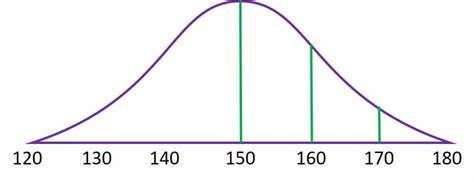The Law School Admission Test (LSAT) is a standardized exam that helps law schools evaluate the academic abilities of prospective students. The LSAT is scored on a 120-180 scale, with the average score being 150. The bell curve is a statistical representation of the distribution of scores on the LSAT.

Many factors can affect your LSAT score, including your pre-law, your study habits, and your test-taking skills. However, the bell curve can give you an idea of how your score compares to other test takers.
What is the LSAT Bell Curve?
The LSAT bell curve is a graph that shows the distribution of scores on the LSAT. The x-axis of the graph represents the LSAT score, and the y-axis represents the percentage of test takers who scored that score.
The bell curve is divided into three sections:
- The bottom 25% of test takers score below 150.
- The middle 50% of test takers score between 150 and 160.
- The top 25% of test takers score above 160.
How to Use the LSAT Bell Curve
The LSAT bell curve can be a helpful tool for evaluating your LSAT score. By comparing your score to the bell curve, you can see how you compare to other test takers. This information can help you set realistic goals for your law school applications.
For example, if you score in the top 25% of test takers, you can be confident that you have a strong chance of being admitted to law school. However, if you score in the bottom 25% of test takers, you may need to consider retaking the LSAT or taking a prep course.
Common Mistakes to Avoid When Interpreting the LSAT Bell Curve
There are a few common mistakes that people make when interpreting the LSAT bell curve. These mistakes include:
- Assuming that the LSAT bell curve is a perfect representation of the distribution of scores. The LSAT bell curve is based on a sample of test takers. As such, it is not a perfect representation of the distribution of scores in the population of all test takers.
- Comparing your score to the wrong part of the bell curve. The bell curve is divided into three sections. Make sure you compare your score to the correct section of the bell curve.
- Using the bell curve to predict your chances of admission to law school. The LSAT bell curve is just one factor that law schools consider when making admission decisions. Other factors, such as your GPA and your personal statement, are also important.
How to Use the LSAT Bell Curve to Your Advantage
The LSAT bell curve can be a valuable tool for planning your law school applications. By understanding the bell curve, you can set realistic goals and make decisions about how to improve your score.
Here are a few tips for using the LSAT bell curve to your advantage:
- Use the bell curve to identify your strengths and weaknesses. The bell curve can help you identify which sections of the LSAT you need to focus on improving.
- Set realistic goals for your LSAT score. The bell curve can help you set realistic goals for your LSAT score.
- Use the bell curve to make decisions about how to improve your score. The bell curve can help you decide whether you need to retake the LSAT or take a prep course.
Conclusion
The LSAT bell curve is a valuable tool for evaluating your LSAT score and planning your law school applications. By understanding the bell curve, you can set realistic goals and make decisions about how to improve your score.
Frequently Asked Questions
What is the average LSAT score?
The average LSAT score is 150.
What is the 75th percentile LSAT score?
The 75th percentile LSAT score is 161.
What is the 90th percentile LSAT score?
The 90th percentile LSAT score is 167.
What is the LSAT score needed to get into a top law school?
The LSAT score needed to get into a top law school varies depending on the school. However, most top law schools require a score of at least 165.
Citations
- Law School Admission Council. (2021). The Official LSAT SuperPrep. New York: Kaplan Publishing.
- National Center for Education Statistics. (2020). The Condition of Education. Washington, D.C.: U.S. Department of Education.
